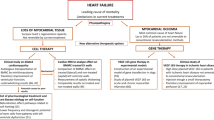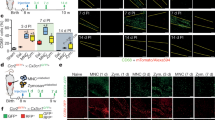Abstract
The first human trial of stem cell therapy for cardiovascular disease was performed 4 years ago. Since that time, almost a dozen studies have reported the early and late clinical effects of cell therapy in acute myocardial infarction and chronic ischemic cardiomyopathy. Initial nonrandomized trials universally showed slight improvement in the left ventricular ejection fraction. Later randomized, controlled trials, however, suggested a less significant effect. They showed either no difference between cell therapy and control treatment or a slight treatment benefit with cell therapy that is lost by 12 months' follow-up. These results have dampened the enthusiasm of some members of the scientific community for the continuation of clinical trials. Because early phase I trials should not be judged on issues other than safety, however, research is unlikely to be hindered. Indeed, the clinical studies reported so far have already taught us a lot about the biology of myocardial repair. Achieving clinical success will, however, probably require much more investment in basic and experimental research. Here, we address some of the current pitfalls in clinical cell therapy trials and lessons that should be learned as we face the challenges of the future.
Key Points
-
Initial cell-therapy trials in the context of myocardial infarction showed a slight global improvement in left ventricular function
-
Randomized trials now indicate that the effects of cell therapy might be less important globally and have more-regional effects
-
Trials are raising new challenges, and findings suggest that more investment in basic and experimental research is required
This is a preview of subscription content, access via your institution
Access options
Subscribe to this journal
Receive 12 print issues and online access
$209.00 per year
only $17.42 per issue
Buy this article
- Purchase on Springer Link
- Instant access to full article PDF
Prices may be subject to local taxes which are calculated during checkout
Similar content being viewed by others
References
Assmus B et al. (2002) Transplantation of progenitor cells and regeneration enhancement in acute myocardial infarction (TOPCARE-AMI). Circulation 106: 3009–3017
Strauer BE et al. (2002) Repair of infarcted myocardium by autologous intracoronary mononuclear bone marrow cell transplantation in humans. Circulation 106: 1913–1918
Fernandez-Aviles F et al. (2004) Experimental and clinical regenerative capability of human bone marrow cells after myocardial infarction. Circ Res 95: 742–748
Stamm C et al. (2003) Autologous bone marrow stem cell transplantation for myocardial regeneration. Lancet 361: 45–46
Wollert KC et al. (2004) Intracoronary autologous bone marrow cell transfer after myocardial infarction. The BOOST randomized controlled clinical trial. Lancet 364: 141–148
Perin EC et al. (2003) Transendocardial autologous bone marrow cell transplantation for severe chronic ischemic heart failure. Circulation 107: 2294–2302
Meyer GP et al. (2006) Intracoronary bone marrow cell transfer after myocardial infarction: eighteen months' follow-up data from the randomized, controlled BOOST (BOne marrOw transfer to enhance ST-elevation infarct regeneration) trial. Circulation 113: 1287–1294
Janssens S et al. (2006) Autologous bone marrow-derived stem cell transfer in patients with ST segment elevation myocardial infarction: double blind randomized controlled trial. Lancet 367: 113–121
Leone AM et al. (2005) Mobilization of bone marrow-derived stem cells after myocardial infarction and left ventricular function. Eur Heart J 26: 1196–1204
Rauscher FM et al. (2003) Aging, progenitor cell exhaustion, and atherosclerosis. Circulation 108: 457–463
Vasa M et al. (2001) Number and migratory activity of circulating endothelial progenitor cells inversely correlate with risk factors for coronary artery disease. Circ Res 89: E1–7
Tepper OM et al. (2002) Human endothelial progenitor cells from type II diabetes exhibit impaired proliferation, adhesion, and incorporation into vascular structures. Circulation 106: 2781–2786
Wang X et al. (2004) Effects of nicotine on the number and activity of circulating endothelial progenitor cells. J Clin Pharmacol 44: 881–889
Heeschen C et al. (2004) Profoundly reduced neovascularization capacity of bone marrow mononuclear cells derived from patients with chronic ischemic heart disease. Circulation 109: 1615–1622
Kume S et al. (2005) Advanced glycation end products attenuate human mesenchymal stem cells and prevent cognate differentiation into adipose tissue, cartilage, and bone. J Bone Miner Res 20: 1647–1658
He T et al. (2004) Human endothelial progenitor cells tolerate oxidative stress due to intrinsically high expression of manganese superoxide dismutase. Arterioscler Thromb Vasc Biol 24: 2021–2027
Hofmann M et al. (2005) Monitoring bone marrow cell homing into the infarcted human myocardium. Circulation 111: 2198–2202
Vulliet PR et al. (2004) Intracoronary arterial injection of mesenchymal stromal cells and microinfarction in dogs. Lancet 363: 783–784
Gnecchi M et al. (2005) Paracrine action accounts for marked protection of ischemic heart by Akt-modified mesenchymal stem cells. Nat Med 11: 367–368
Caplice NM (2006) The future of cell therapy for myocardial infarction. Nat Clin Pract Cardiovasc Med 3 (Suppl 1): S129–S132
Author information
Authors and Affiliations
Corresponding author
Ethics declarations
Competing interests
The authors declare no competing financial interests.
Rights and permissions
About this article
Cite this article
Metharom, P., Doyle, B. & Caplice, N. Clinical trials in stem cell therapy: pitfalls and lessons for the future. Nat Rev Cardiol 4 (Suppl 1), S96–S99 (2007). https://doi.org/10.1038/ncpcardio0730
Received:
Accepted:
Issue Date:
DOI: https://doi.org/10.1038/ncpcardio0730



